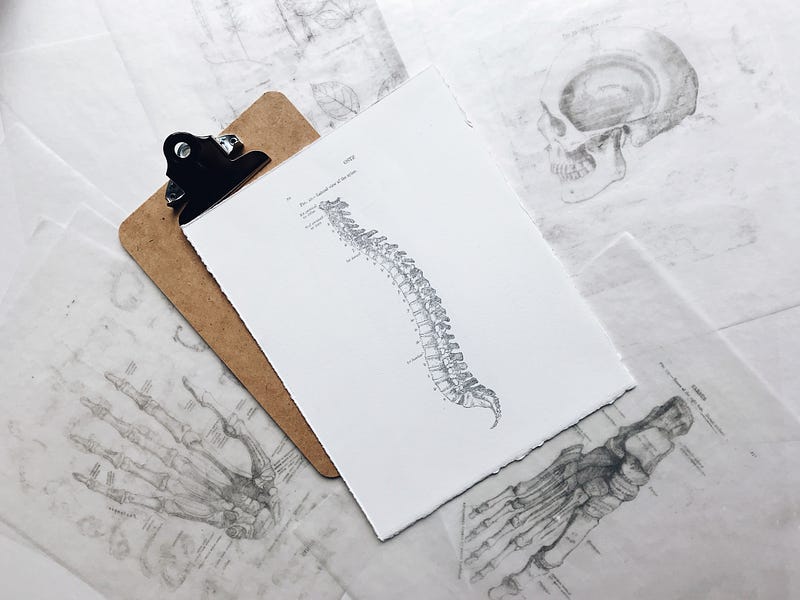Train Your Core for a Stronger Spine: Beyond Six-Pack Abs
Written on
Core Stability: A Key to Health and Performance
We've all come across images of toned six-pack abs, whether it's through social media or in our own reflections. While they might be visually attractive, the functionality of this muscle group is quite limited, primarily facilitating spinal flexion. Relying solely on sit-ups is insufficient. It's crucial to recognize the other muscles that support the spine and learn how to train them effectively. This approach can lead to enhanced longevity, improved performance, and reduced lower back pain.
Understanding Core Stability
Core stability refers to the ability of both passive and active stabilizers in the lumbar-pelvic area to uphold proper trunk and hip alignment during various movements, whether static or dynamic.
Comparing Muscle Functions
As mentioned earlier, the rectus abdominis (the so-called six-pack muscle) is responsible for bending the spine forward. However, it’s the transverse abdominis (TA) and multifidus (MF) that are more critical for stability.
The TA is the innermost muscle of the abdominal wall, functioning like a corset that encases the abdominal region, ensuring everything is secure. Its primary role is to stabilize the spine and hips; any decrease in its activation has been linked to the development of lower back pain. This muscle must engage prior to any movement to ensure proper function.
On the posterior side, the multifidus extends the entire length of the spine, attaching to each vertebra. It also plays a vital role in maintaining spinal stability. When you activate the TA, the MF often engages simultaneously.
Low Back Pain: A Common Challenge

Photo by Joyce McCown on Unsplash
Low back pain is a widespread musculoskeletal issue, prompting many to seek relief. Various factors contribute to its onset, with dysfunction in core musculature ranking high among them. Individuals suffering from low back pain often exhibit altered core muscle recruitment, resulting in diminished spinal stability. This loss of function is exacerbated by prolonged sitting in poor postures, which places additional pressure on the lumbar spine.
Training the TA and MF through targeted core stability exercises can effectively address this issue. Coordinating these muscles, alongside others in the abdominal area, is essential for optimal function. Enhancing the coordinated action of these muscles leads to improved trunk stability.
Consequently, stability exercises have emerged as a primary method for rehabilitating low back pain. Not only do they enhance neuromuscular function, but they also contribute to muscle hypertrophy. Ultrasound studies have shown that after engaging in a core stability program, an increase in muscle thickness in both the TA and MF occurs, which aids in managing low back pain. While neuromuscular adaptations play a significant role, there is also evidence suggesting that increased muscle size may contribute positively.
Enhancing Athletic Performance

Photo by Chau Cédric on Unsplash
Core stability training is crucial for athletic development. Research indicates a strong correlation between core stability and athletic performance, although the exact reasons remain unclear. Core training is seldom performed in isolation, often incorporated into broader training regimens. However, some evidence suggests that a lack of core stability correlates with a higher risk of musculoskeletal injuries, particularly in the lower body.
While studies isolating core stability programs are limited, there are promising results. For instance, one study found that participants reduced their 5000m run time by 47 seconds following a six-week core training program. Another study noted significant improvements in 50m swim performance among national-level competitors after a similar duration of core training.
Additionally, weak core muscles can negatively affect running biomechanics. When core musculature is dysfunctional, other muscles must compensate, leading to increased shear and compressive forces on the lumbar spine. Given that running subjects the spine to forces two to three times our body weight, this can elevate the risk of spinal injuries.
Effective Core Exercises
The essence of core stability training lies in exercises that resist movement, which can be categorized into three types: anti-extension, anti-rotation, and anti-lateral flexion.
Anti-extension Exercises
- Plank: Maintain a straight line from shoulders to ankles. Engage your glutes to avoid elevating your hips. For an easier modification, use an incline.
- Deadbug: Keep your lower back pressed against the ground while extending opposite limbs slowly. Modify by bending your knees or elbows if needed.
Anti-Rotation Exercises
- Bird/Dog: Minimize movement as you extend opposite limbs, resisting any rotational shift. Use a light dumbbell or foam roller on your back for feedback.
- Paloff Press: Stand sideways to a cable or band, pressing it forward from your chest while resisting rotation. Adjust the tension for easier or harder variations.
Anti-Lateral Flexion Exercises
- Single Arm Loaded Carry: Walk normally but slowly while resisting lateral flexion from a kettlebell or dumbbell.
- Side Plank: Keep your body straight, ensuring your lower hip doesn’t sag. Modify by using an incline or performing it on your knees.
Final Thoughts on Core Training
In the long run, regular core stability training is beneficial for most individuals. To move pain-free and prevent future issues, incorporating these exercises into your routine is wise. While sit-ups have their place, they should not dominate your core training focus.
Just as with all forms of exercise, the goal is to maintain strength over time, rather than simply aiming for longer holds or heavier weights. Mastering these core stability exercises will provide significant advantages in your health journey.
This video provides five effective core exercises specifically designed to alleviate lower back pain, helping you to strengthen your core safely.
Learn the essential core exercises that enhance strength and stability, crucial for improving athletic performance and reducing injury risk.